How will we live together? Dongziguan affordable housing!
in ARCHITETTURA | architecture
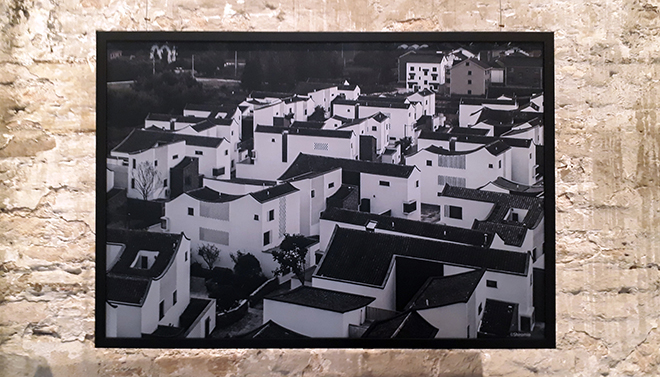
© arcomai I Installation view Rural Nostalgia – Urban Dream.
How did the “Affordable Housing in Dongziguan” project come about? From the need to create low-cost housing for workers, relocated to rural areas, while maintaining urban housing standards. We are in China and more precisely in the village of Dongziguan, in the province of Hangzhou. The study, created by the LINE+ STUDIO atelier, is part of the installation Rural Nostalgia | Urban Dream, exhibited at the 17th Venice Architecture Biennale in the Arsenale, together with two other projects: Stray bird art hotel – Songyang Chenjiapu and Teahouse in Jiuxing Village. The installation, curated by Fanhao Meng, covers a space of about 100 sqm. and is made up of digital videos, graphic images and 46 plastic models (corresponding to as many housing units) on a 1:30 scale. Organized according to the urban morphology of the new settlement, the models are rigorously white and suspended at eye level thanks to thin metal supports. Some of these “houses” are “open” and furnished to showcase the life within. An undoubtedly very suggestive solution that gives empathy to the exhibition.
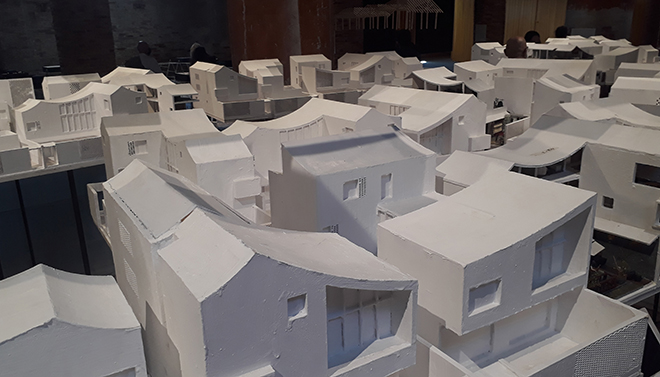
© arcomai I Installation view Rural Nostalgia – Urban Dream.
The residential programme, which began in September 2014 and was completed in July 2016, is still current and pertinent to the “call” from the curator of the Biennale – the architect, professor and researcher Hashim Sarkis – who, with the question How will we live together?, addressed to the architects of this edition to imagine spaces where “we can live generously together in the face of a context of sharpened political divisions and growing economic inequalities”.
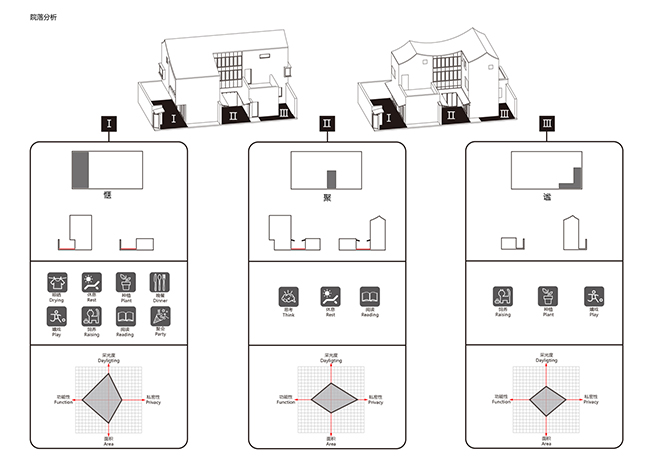
© LINE+ STUDIO I The functions within the three courtyard types.
Commissioned by the Hangzhou municipal government, the project aims to provide 15,300 square meters of affordable housing for 50 families for a total budget of around US$3 million, and thus an average construction cost of around €175 per square meter. A challenge won, if we consider that the financial availability was far below the average. The building proposal seeks to organize the shape of the buildings in the vernacular style according to a courtyard typology, respecting the urban morphology typical of the area. The basic module consists of six buildings, belonging to six different families, developed according to two basic units (11x21m and 16x14m) around a courtyard, conceived not as a simple void but as a place of communication and community participation, according to three different typologies: open courtyard, quiet courtyard and private courtyard; which generate in a spatial sequence from public to private.
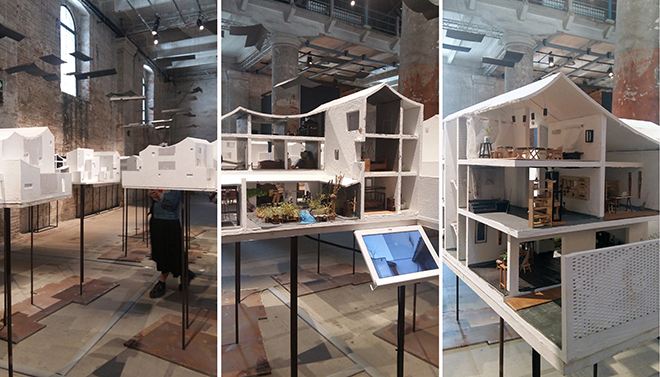
© arcomai I Installation view Rural Nostalgia – Urban Dream.
The predominant architectural element is the gabled roof developed asymmetrically and continuously, including the roof lines of various buildings. This formal and constructive solution generates a subtle contrast between the independence of the housing volume and the continuity of the roof for multiple buildings, where diversity and unity coexist. The dark color of the roofs, obtained with traditional blue tiles, and the external walls painted in white, form a strong chromatic and compositional contrast. The choice, in the staging, to detach the roofs from the models and suspend them above them, emphasizes the symbolic meaning of the roofs as a necessary and unifying element.
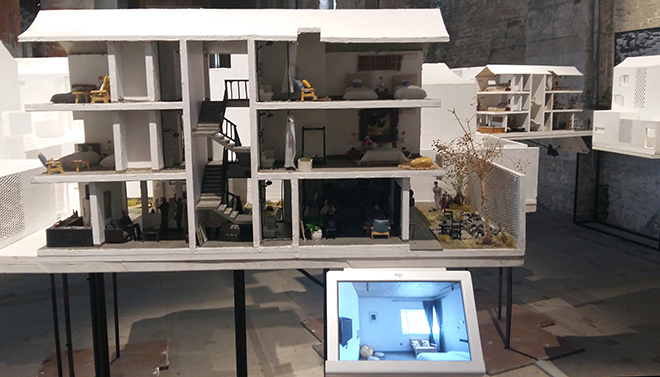
© arcomai I Installation view Rural Nostalgia – Urban Dream.
Through an information campaign, the village of Dongziguan has received unexpected interest from public opinion. The success of this investment formula has helped to promote the return of immigrants and the transfer here of artists and professionals from other places in the region. Thus, a new community was formed which, due to its diversity, is well translated from an urbanistic point of view with this “cluster” arrangement. The system of open spaces meets different functional needs such as: being together, playing chess or cards, dancing, painting and organizing calligraphy exhibitions. This inclusive space can meet the diverse needs of the people living in these blocks, a source of village vitality where architecture serves as a means of aggregation. Rural Nostalgia | Urban Dream represents a reflection on China’s new approach to urban planning, in which the necessity to return to a life refreshed by the alienation of the metropolis matches the expectations of residents of suburban communities with regard to life in the city.
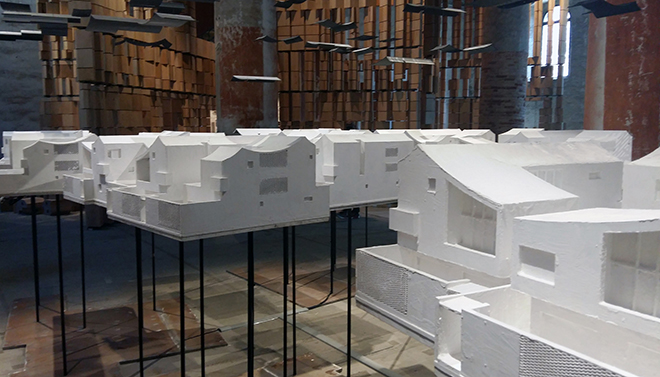
© arcomai I Installation view Rural Nostalgia – Urban Dream.
